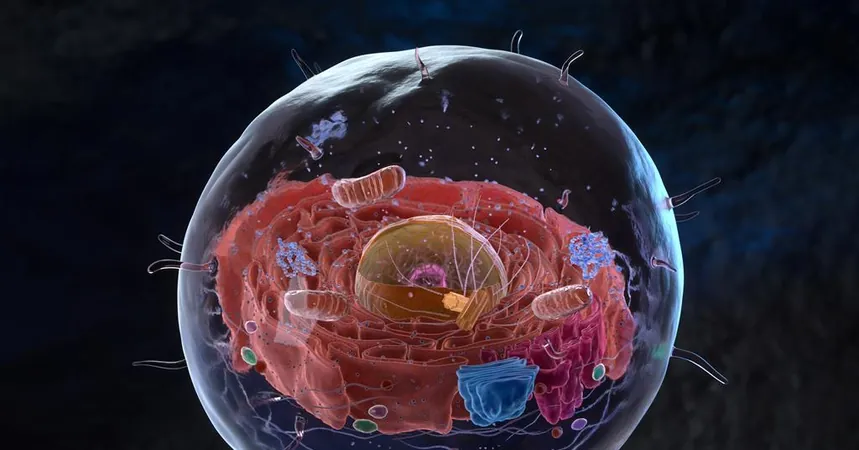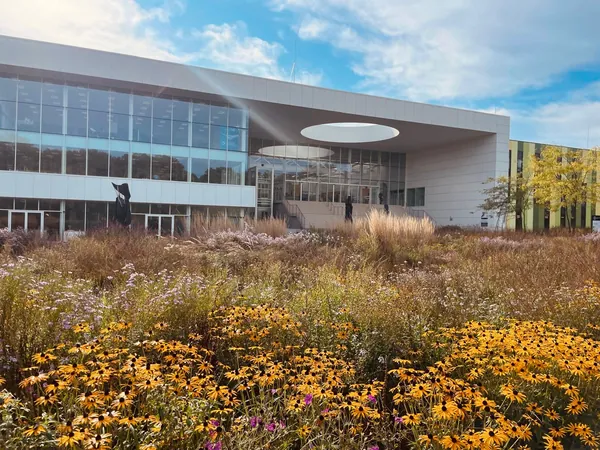
Revolutionary Discovery: Aging Cellular Blobs Could Hold Key to Neurodegenerative Diseases!
2025-03-24
Author: Noah
Revolutionary Discovery: Aging Cellular Blobs Could Hold Key to Neurodegenerative Diseases!
Recent groundbreaking research has unveiled a surprising connection between aging biomolecular condensates—fluid-like structures within our cells—and the onset of neurodegenerative diseases. These condensates, which play critical roles in various cellular processes, exhibit fascinating changes in their electrochemical gradients over time, raising important implications for our understanding of diseases such as Alzheimer's.
What are Biomolecular Condensates?
Biomolecular condensates, also known as "cellular blobs," are aggregates formed without membranes that serve numerous vital functions in cells, from storing biomolecules to facilitating gene regulation and DNA repair. First recognized in 2009, these structures had been observed for nearly 200 years under various ambiguous names like speckles and granules. These condensates come in different forms, exhibiting properties ranging from liquid-like to gel-like or even semi-solid states. Their transient nature means they typically form in response to physiological signals, like cellular stress, and eventually dissipate. However, recent research shows that these condensates 'age' and change in ways that could significantly impact cellular health.
Groundbreaking Research Findings
A team led by Yifan Dai from Washington University in St. Louis discovered that as condensates mature, they undergo electrochemical changes. Using a model condensate composed of a common protein mimic, the researchers found that within the first hours of formation, the pH of the condensates shifted from neutral to basic and later shifted to acidic over the course of a day. This aging process resulted in an internally structured condensate with an acidic core enveloped in a more alkaline shell. The transition in pH was linked to alterations in the viscosity and molecular interactions within the condensate, indicating that the changes were not merely passive but actively regulated processes.
Electrochemical Changes and Their Implications
Utilizing advanced electrochemical techniques, the researchers illuminated how the electric potential between the dense condensate and its surrounding fluid evolved as these structures aged. They observed that such electrochemical variations corresponded with a decreased capacity for the condensates to facilitate essential redox reactions—critical processes that contribute to maintaining cellular health. Alarmingly, while younger condensates limited the formation of amyloid-beta fibrils—structures closely associated with Alzheimer’s disease—older condensates allowed these harmful proteins to proliferate unchecked, forming tangled networks that could exacerbate neurodegeneration.
Potential for Therapeutic Interventions
The findings suggest that seemingly similar condensates could have drastically different properties depending on their age. This longevity-induced variation may be a crucial factor in understanding how protein misfolding diseases develop, providing a potential new avenue for therapeutic intervention. Dai posits that the shifts in protein interactions and biochemistry may alter the way ions are distributed within the condensate, further complicating our understanding of their roles in health and disease.
Expert Opinions
Biophysical chemist Tuomas Knowles from the University of Cambridge emphasizes the significance of these findings, stating they could reshape our comprehension of how aging condensates contribute to the pathology associated with neurodegenerative diseases.
Looking to the Future
As scientists continue to unravel the complexities of these cellular structures, the hope is that targeting the aging process of biomolecular condensates could lead to innovative treatments for debilitating diseases like Alzheimer's, ultimately enhancing the quality of life for millions around the globe. This remarkable understanding of cellular dynamics could be the key to unlocking a future of better brain health. Stay tuned for more updates on this thrilling research frontier!









 Brasil (PT)
Brasil (PT)
 Canada (EN)
Canada (EN)
 Chile (ES)
Chile (ES)
 Česko (CS)
Česko (CS)
 대한민국 (KO)
대한민국 (KO)
 España (ES)
España (ES)
 France (FR)
France (FR)
 Hong Kong (EN)
Hong Kong (EN)
 Italia (IT)
Italia (IT)
 日本 (JA)
日本 (JA)
 Magyarország (HU)
Magyarország (HU)
 Norge (NO)
Norge (NO)
 Polska (PL)
Polska (PL)
 Schweiz (DE)
Schweiz (DE)
 Singapore (EN)
Singapore (EN)
 Sverige (SV)
Sverige (SV)
 Suomi (FI)
Suomi (FI)
 Türkiye (TR)
Türkiye (TR)
 الإمارات العربية المتحدة (AR)
الإمارات العربية المتحدة (AR)